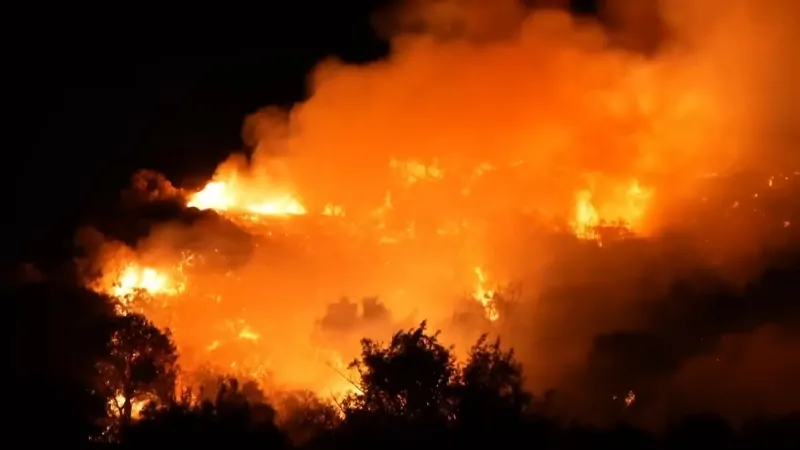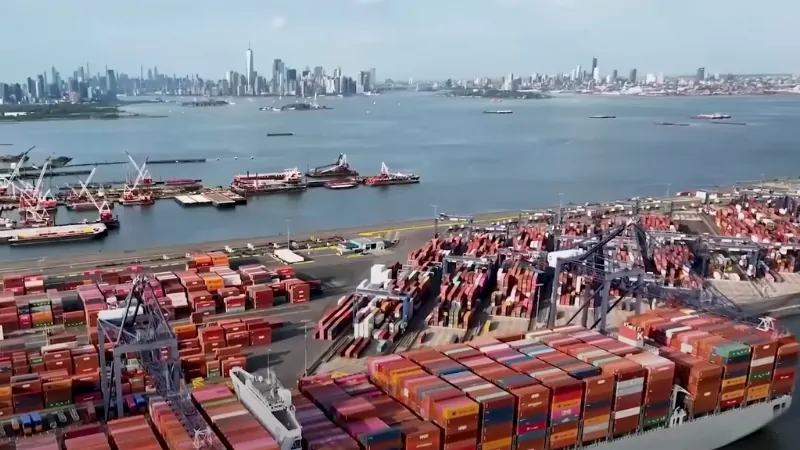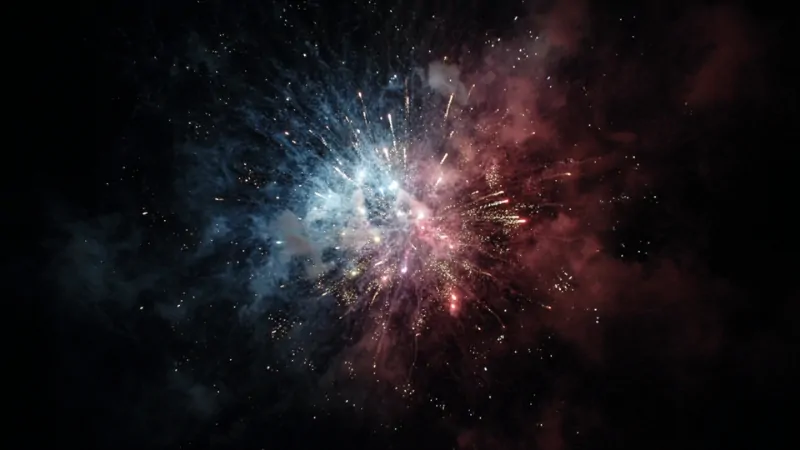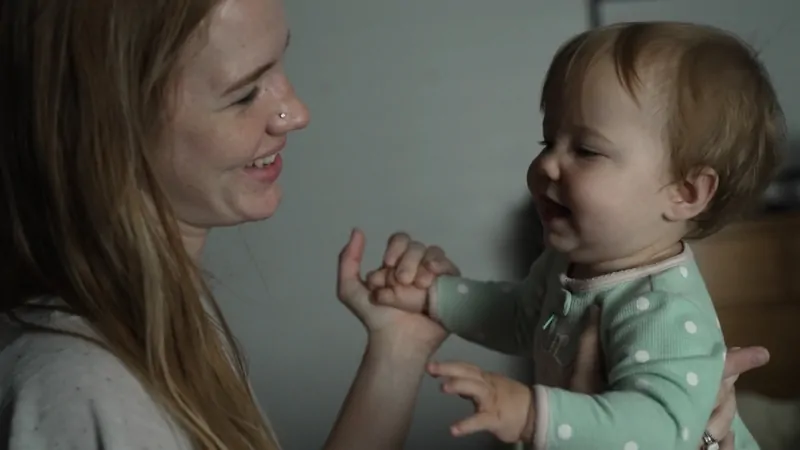The wildfires tearing through since last Tuesday have claimed 24 lives, displaced over 130,000 people in Los Angeles, and reduced more than 12,000 structures to ash.
Fueled by intense Santa Ana winds and tinder-dry conditions, the flames have scorched an area larger than the city of San Francisco, leaving behind unimaginable devastation.
Fire crews have struggled to contain the infernos, with winds reaching dangerous speeds and dry vegetation acting as kindling, exacerbating the destruction.
Table of Contents
ToggleKey Statistics
The Palisades Fire, which erupted west of Los Angeles, tore through the Pacific Palisades neighborhood, devastating homes and businesses. The fire remains only 11% contained as of Sunday.
The Eaton Fire, which ravaged areas north of Pasadena, has been somewhat controlled, with containment reaching 27%. While the Kenneth Fire in West Hills has been fully contained, the Hurst Fire in the San Fernando Valley remains at 89% containment.
The fires have not only destroyed physical structures but also uprooted the lives of thousands, including celebrities like Billy Crystal, Mandy Moore, and Los Angeles Lakers head coach JJ Redick.
In addition to residential properties, the flames consumed cultural and community landmarks, including mosques, synagogues, churches, and even historically significant areas that housed generations of diverse families.
Evacuation and Power Outages
Over 450,000 people were left without power at the height of the disaster, and 70,000 customers remained in the dark as of Sunday morning. Evacuation orders have displaced tens of thousands of residents, with entire neighborhoods emptied out as flames closed in.
The damage to critical infrastructure has compounded the region’s challenges, with sewer, water, and power systems requiring extensive repairs.
For those who have been allowed to return, the scene is one of utter devastation. Many homes stand as nothing more than blackened shells, while streets are littered with downed power lines, shattered glass, and debris.
Some residents, like Ricky Gordon, have returned to find their homes spared but their communities destroyed. “It’s not just about your own house – it’s about the loss of your community,” Gordon shared as she surveyed the ruins.
Human Stories of Loss and Resilience
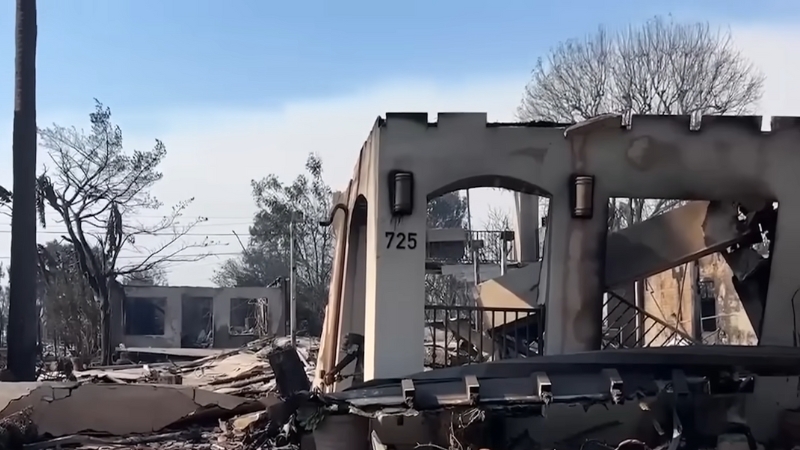
The human toll of these fires extends far beyond the physical damage. Families like Daniel Clive McCallum’s, who moved to the Palisades to escape fire-prone areas, are grappling with the heartbreaking reality of losing not just their homes but the dreams they built there.
McCallum described his futile attempts to save his home as embers rained down and winds fanned the flames. “The winds were too insane,” he recalled. “The neighborhood went from being a sanctuary that was safe to being toxic, poisonous, and dangerous.”
For those displaced, the grief is not just over the loss of property but also over the memories and future plans reduced to ashes. “I came here with the intention of bringing something home,” McCallum added, standing amidst the ruins of what was once his family’s safe haven. “But there’s literally nothing.”
Climate Change and Escalating Fire Risks
At any given time Los Angeles is at risk of fire, flood, extreme heat, mudslides and earthquakes.
Yet climate change is causing more extreme and more frequent fires—and at the same time, ever more people are moving to the outskirts https://t.co/c5mDRUvroE
— The Economist (@TheEconomist) January 10, 2025
Experts warn that the devastating conditions fueling these wildfires are a harbinger of future risks as climate change continues to exacerbate extreme weather patterns. Southern California’s drought, coupled with the absence of seasonal rains, created an environment primed for disaster.
Vegetation that might have been dampened by winter storms remained dangerously dry, allowing the flames to spread with unprecedented speed and intensity.
Since the beginning of the year, nearly 100 fires have been reported across California, even in what is traditionally considered the cooler winter season. With strong winds expected to persist into midweek, fire officials remain on high alert, as any spark could ignite new blazes.
Hope Amidst Ashes
Amid the devastation, communities are coming together to provide relief and support to those affected. Volunteers have set up relief stations, offering food, water, and supplies to displaced residents. While the road to recovery will be long, these acts of kindness offer a glimmer of hope in a time of despair.
As containment efforts continue, officials are urging residents to remain vigilant and prepare for the ongoing challenges posed by these fires. The resilience of the affected communities serves as a reminder of the strength that emerges in the face of tragedy, even as the scars of the disaster will take years to heal.
Related Posts:
- Map of Los Angeles, California – Geography,…
- Los Angeles Population 2025 - Current Trends and Projections
- Global Maternal Deaths Reached 260,000 Says WHO
- Analyzing RSV Mortality Rates in Infants Over the…
- How the US Birth Rate Has Evolved Over the Past Century
- Statistics on Statin Use in The US - The Impact of…


